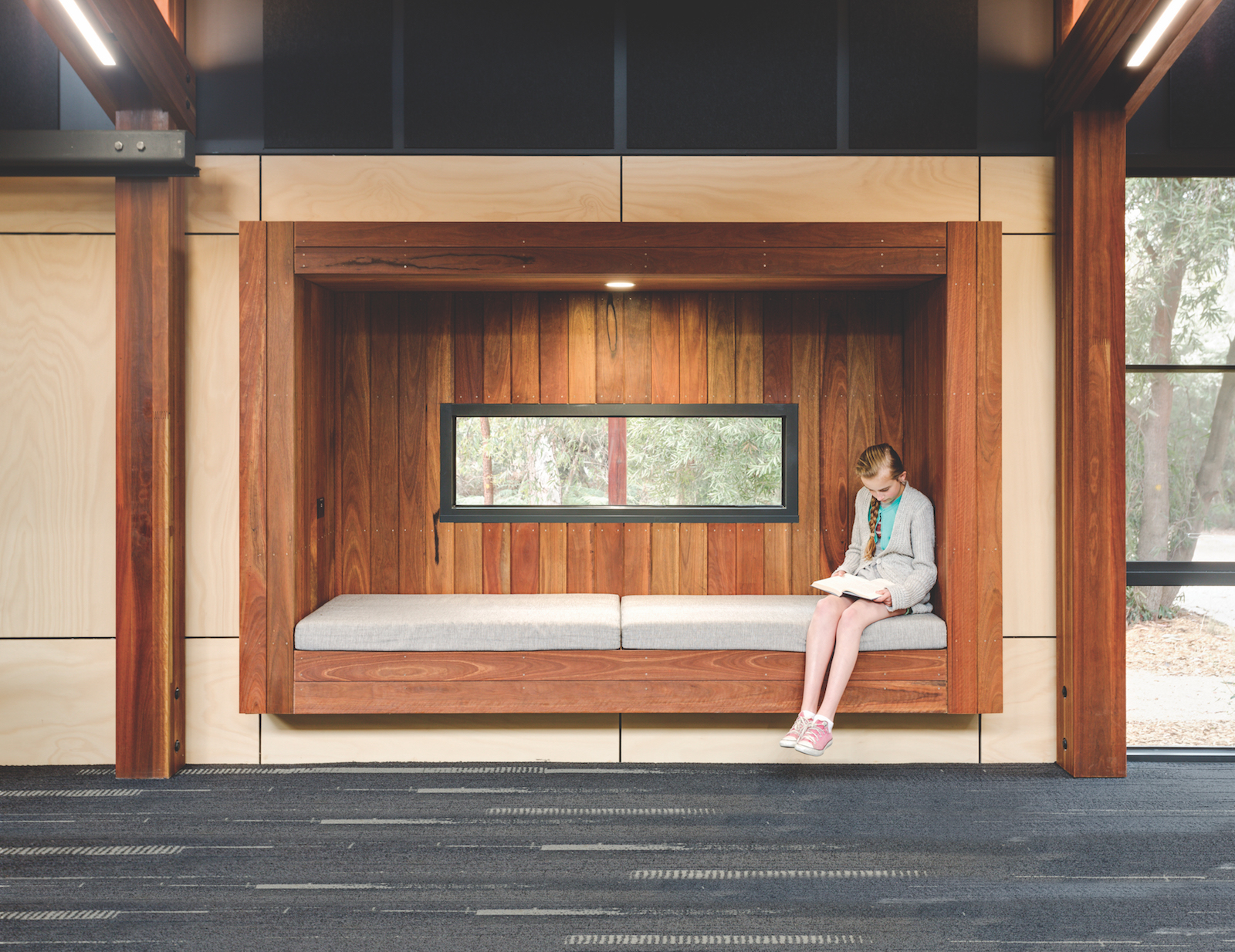
When it comes to building materials, wood is both the oldest and the newest choice, evolving in use from the purely functional to the truly beautiful.
Extracts from the recent Planet Ark report, Wood – Nature Inspired Design, explore some of the health and wellbeing benefits of exposure to this most ancient and modern material.
Our need for nature
Modern society has changed its relationship with nature. In the space of a single generation, children’s play has moved from outdoors to indoors, the iconic backyard has shrunk, parents have become increasingly anxious about children’s safety, working hours and stress levels have risen and technology (especially screens) has encroached into almost all areas of life.
Over recent years there has been an increasing recognition of the benefits that humans gain from contact with trees and nature.
The health and happiness benefits associated with spending time outside in nature are well known and have been studied extensively by the scientific community and reported on by Planet Ark.
These known benefits include:
- Increased levels of happiness and self esteem
- Increased cognitive abilities
- Decreased stress response, blood pressure, pulse rates and cholesterol levels.
Need a little more convincing? Here are our top reasons to consider wood for your next build.
The seven wonders of wood
- Reconnects humans to nature, improving emotional state and self-expression
- Reduces stress response (pulse rate and blood pressure)
- Absorbs and releases moisture in the air to moderate humidity and improve air quality
- Offers full range of building uses from the functional and structural to the aesthetic
- The only renewable building material when responsibly sourced and certified
- A long-term store of carbon which helps to combat climate change
- Low energy used in production for less CO2 in the atmosphere.
The environmental impacts of wood: a note on green credentials
Timber is the only major renewable building material currently available and when responsibly sourced and certified, it is the only material that actively helps to combat climate change.
Certification ensures that wood comes from a well-managed forest or plantation and is legally harvested, ensuring that when one tree is harvested, another is planted in its place.
In Australia, forests can be certified under the Australian Forest Certification Scheme (AFCS) or the Global Forest Stewardship Council (FSC).
Wood and design
Timber is a natural, organic material, and it has many uses as a building material, including framing, flooring, textures and features.
More recently timber has become the primary structural component in multi-level construction using engineered timber, such as cross-laminated timber (CLT), glued laminated timber (glulam) and laminated veneer lumber (LVL).
When used well, wood creates buildings that combine many of the key elements of nature-connected design, including natural light, air flow and views of green spaces. Wood can also be used to reflect the patterns and shapes seen in nature, resembling the arrangement of trees and their branches.
Wood products within a room have been shown to improve indoor air quality by moderating humidity, absorbing moisture from the air in humid conditions and releasing moisture in dry conditions.
Studies have shown that indoor environment quality is critical to the happiness of a building’s occupants. This has been shown to enhance the value of the property, translating into higher rental return and selling price.
An aspirational example: Melbourne School of Design
The winner of the 2015 Australian Timber Design Award and a 6-star Green Star Rated building, the Melbourne School of Design is an inspired example of nature-led design practices.
The building is a showcase of what can be achieved with structural timber. Engineered timber beams and coffers span its 20-metre wide atrium, acting as sunshades, structural restraints, and structural support for the atrium roof glazing. The timber framed and lined hanging studio is suspended from two of the overhead engineered timber beams, whilst the custom detailed perforations and folds of the hanging studio envelope works to meet the acoustic tuning of the atrium space.
Dahlsens has longstanding relationships with local and international suppliers of an extensive range of different timbers. There’s not much we can’t source for you. We love to see your finished projects too. We invite you to get in touch.

